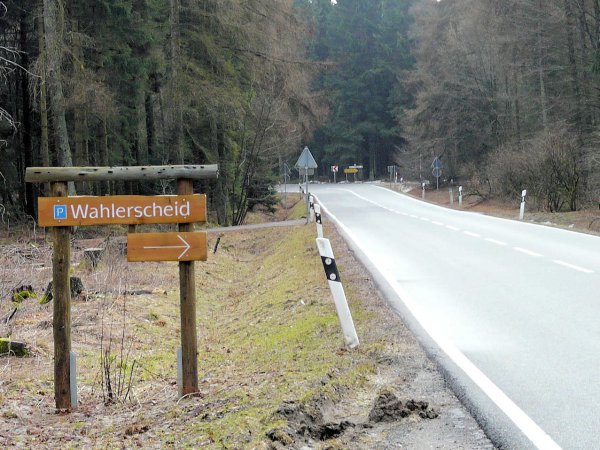in the Attack on pillbox sector at Wahlerscheid, Germany
(Heartbreak Crossroads) - 13 - 16 December 1944
(Rhineland Campaign)
By Captain John A. Frye
THE ATTACK cntnd.
The Battalion was in contact with friendly troops on both flanks. (58)
The night was bitter cold. The melting snow froze again and became very slippery. Foxholes were improved by placing fir branches in them. A roll of two blankets per man was brought forward and distributed. Also, by infiltration, two hot meals were fed to most of the men during the night. Mortar and artillery fire continued, but was less intense after darkness. Little rest was gained by any members of the Battalion during the night of 13 - 14 December. Evacuation of the wounded and dead was pushed. Lanes through the mine fields up to the front line positions were cleared.
Plans for renewal of the attack at 0800, 14 December 1944 were received. The 3rd, or Reserve Battalion, was ordered to attack, with the 2nd Battalion, on the right flank. A 15 minute artillery preparation would be laid on, starting at H-15, covering located pillboxes. The 2nd Battalion would continue its main effort in G Company sector. (59)

Wahlerscheid Crossroads in the background.
The attack jumped off at 0800, 14 December, as planned, with the 3rd Battalion on the right. Again heavy small arms, mortar, and artillery fire covered the zone of action, especially the wire obstacles through which it was necessary to move in order to get to the pillboxes. The 3rd Battalion fared no better than the 1st or 2nd Battalions. Guns, located in pillbox emplacements of concrete and steel, swept all obstacles with withering small arms fire and observed mortar and artillery fire. The heavily wooded terrain behind the line of pillboxes was saturated by friendly mortar and artillery fire. (60)
The subfreezing temperature and snow covered ground made the task of leadership a most difficult one. Casualties mounted steadily throughout the day. E Company lost most heavily, due to the attempted penetration through the wire on 13 December. G Company fared some better, in that they were able to receive more cover and concealment from the ground folds and vegetation within the area. F Company, although in reserve, suffered heavily from mortar and artillery fire, along with Battalion Headquarters and Headquarters Company. In addition to casualties inflicted by enemy fire, many men were getting sick from exposure and exhaustion due to the severe weather. (61)
As a result of the failure of all Battalions to gain access to the pillboxes, the attack was ordered halted at 1415. Regiment ordered a withdrawal of front line units to. allow for an air strike and registration of heavy and medium artillery to destroy all obstacles. (62)
After dark E and G Companies were pulled back approximately 500 yards. The 3rd Battalion moved back into the reserve position. A great deal of movement of units and reorganization took place during the night of 14 - 15 December.
The artillery that started firing soon after the attack was called off early in the afternoon covered this type of movement very well. After dark enemy fire became spasmodic and was practically all interdiction fire. The Battalion was organized with E and G Companies facing the direction of the enemy, F Company tied in the rear area; and H Company, less detachments, and Battalion Headquarters Company made up the center of the sector. The Battalion was in contact with friendly units on both flanks. Blanket rolls were brought up and two hot meals were brought forward during the night. The weather was cold, with the temperature below freezing. Much of the snow had melted but froze again, making the trails very slippery. (63)
The artillery fired throughout the night and the next day. The firing was on located pillboxes, suspected locations and interdiction.
The following artillery was used:
1 battery 240 mm howitzers
2 battalions 4.5 rockets
2 gun battalions S. P. 155 mm guns
4 battalions 155 mm howitzers
8 battalions 105 mm howitzers. (64)
On the morning of 15 December the air strike was prepared for by laying out marking panels to mark the front line of friendly troops. But because of poor visibility, due to snow and low ground fog, the target was obscured and this strike was called off. However, the aforementioned artillery continued to pound the area with both observed and unobserved fires. (65)

